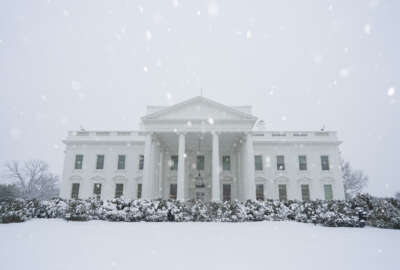Berry: claims about feds’ pay ‘unfair and untrue’
OPM says that it\'s unfair to compare federal workers\' compensation with private sector workers at-large. Federal workers are specialized and have a higher degree...
wfedstaff | June 3, 2015 12:46 pm
By fifth highest paid sector out of 72. Cato’s Tad DeHaven, a budget analyst, looked at statistics from the Commerce Department’s Bureau of Economic Analysis (BEA) and found that federal civilian workers make on average $123,049, while federal military employees make a shade less, $122,263.
The average private sector employee makes $61,051, Cato reports.
“There is disparity and it’s growing,” DeHaven said in an interview with Federal News Radio. “You can’t look at education status because of the weakness in the private sector and the strength of the federal workforce. The federal workforce is working in a monopoly industry so coming up with comparable worth is controversial.”
Berry said these comparisons are inaccurate and degrade the work federal employees perform.
“Stories by USA Today and studies by the Cato Institute and the Heritage Foundation look only at gross averages and include retail positions, restaurant and entry level jobs and that reduces private sector averages,” he said. “The federal workforce is a highly specialized entity. If you wanted to be fair, you would have to compare like-to-like and job-to-job. Compare us to IBM or GE but not every job in the country.”
Berry said the federal workforce has changed significantly over the past 30 years, with a 50 percent drop in the number of blue collar workers, and a 50 percent increase in the number of technology and healthcare professionals.
“The data clearly shows that many of these highly specialized, doctors, nurses and cybersecurity professionals are paid less than private sector counter parts,” Berry said.
OPM on Friday held a separate press briefing to dispute these figures from Cato, Heritage and others. Officials said that on average federal employees make 22 percent less than their private sector counterparts.
But Berry doesn’t like that number either. He said that figure is just as faulty as those used by Cato or Heritage because it’s an average.
“What is more helpful would be a comparison that looks job-to-job and compares how we are doing and where we are under. We should do what we need to do to raise the levels and, where we are over, we should restrain pay until they catch up,” he said. “We need to look at the issue fairly and with an open mind.”
Berry said OPM is leading an effort to come up with a way to compare public and private sector jobs. Berry said he hopes by October to know the way forward and decide whether the Federal Employees Pay Comparability Act of 1990 needs to be adjusted or updated.
In the meantime, Berry said it’s his job to push back against the continued attacks against federal employees.
“When they cross the line with either exaggeration or unfairness, it behooves me as the director to step forward and say so,” he says.
“These headlines that are characterizing that federal employees are paid double the private sector are ridiculous. There’s no truth to them, they are unfair and untrue. In this case, this wasn’t a USA Today analysis, this was an analysis by the Cato Institute and the Heritage Foundation, who are advancing a specific conservative agenda. They aren’t advancing facts that are true. They are not advancing a factually-oriented debate. They’re advancing a specific opinion and, in this case, I believe is wrong.”
Cato’s DeHaven said it’s difficult to measure the productivity of federal workers where as private sector jobs that make more than federal workers can be measured more easily.
“A lot of Americans don’t associate salary and benefits of federal workers with folks on Wall Street and they have a hard time understanding how to put a market price on their work,” he said. “Undeniable it’s high. They are well paid and well compensated and have tremendous job security. To a lot of Americans it’s surprising those numbers rank with those other industries.”
He also said the fact that the federal workforce has grown over the past decade while the private sector workforce has shrunk is another reason why federal employees are in the 10 in earnings as compared to other sectors. DeHaven said his research showed federal civilian pay grew by 62 percent and military pay grew by 109 percent since 2000.
An e-mail asking Heritage for comment on Berry’s criticism was not immediately answered.
(Copyright 2010 by FederalNewsRadio.com. All Rights Reserved.)
Copyright © 2025 Federal News Network. All rights reserved. This website is not intended for users located within the European Economic Area.





